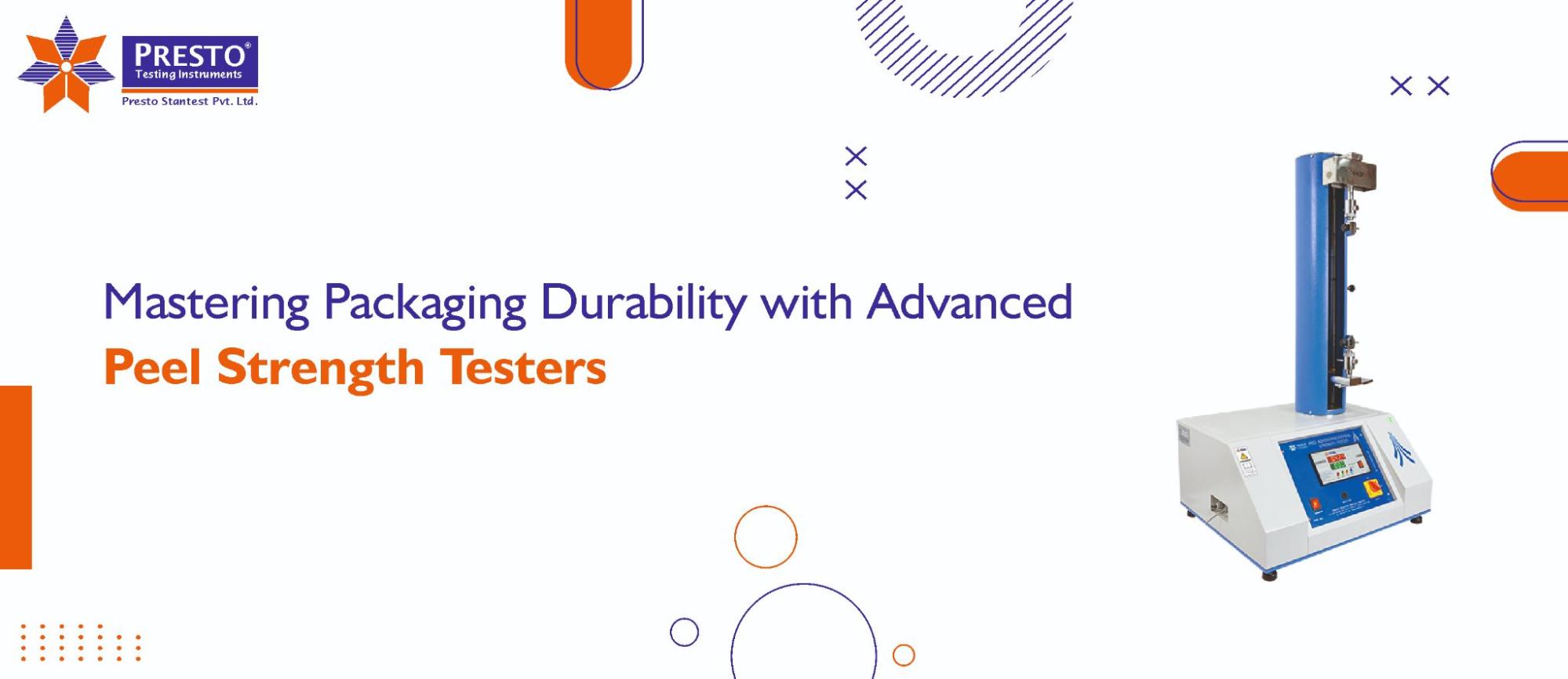Product Packaging Strength is integral, especially in the food, pharmaceutical, and general consumer goods sectors. Protecting freshness and compliance with regulatory requirements is the basic requirement for ensuring product commercialisation. One of the principal aspects of packaging testing is the peel strength factor, which determines the efficacy and reliability of seals, adhesives, or laminates. It introduces the family of peel-strength testing machines. Some advanced instruments are available in this family, including the peel-off strength tester, peel-seal strength tester, and peel force tester. These devices play a crucial role in assessing the performance of packaging.
This blog goes deep into the world of peel strength testing by explaining its applications, technical nuances, and why it is indispensable for quality assurance professionals aiming to elevate their packaging standards.
Understanding Peel Strength Testing: The Basics and Beyond
Peel strength testing determines the adhesive or seal strength of materials by determining how much resistance they will withstand to a controlled peeling force. The principle behind this is simple; however, digital peel tester give sophistication in the form of high accuracy, customizable test protocols, and real-time data analysis.
Key Applications
-
Adhesive Labeling: Sticking labels through any environmental conditions.
-
Flexible Packaging: The strength of heat seals in pouches and bags is verified.
-
Medical Packaging: Sterile barrier systems are tested to ensure compliance with stringent standards.
-
Industrial Adhesives: The bonding efficacy in tapes and films is verified.
Advanced Peel Strength Testing Machines
Modern peel strength testers have come a long way, integrating features that enhance efficiency, accuracy, and versatility. Let's look into the advanced capabilities of the latest models.
1. Digital Interface and Real-Time Analytics
The digital peel tester possesses sophisticated software that records data in real time, allowing professionals to analyze trends and variations right away. With features like automated calibration and multi-language support, these devices diminish human error and increase operation ease.
2. Precision Load Cells and Data Accuracy
Peel strength testing machines come with high-quality load cells with precision that can offer data accuracy within a tolerance of 0.1%. Such accuracy is critical in pharmaceutical industries, for example, where regulatory compliance often depends on reliable data.
3. Environment Simulation
Advanced testers can mimic environmental conditions, such as humidity, temperature, and pressure, to simulate real-world scenarios and ensure packaging will perform as expected over its lifecycle.
Why Peel Strength Matters: A Deep Dive
1. Safety of the Product
Weak seals or adhesives may lead to product contamination, spillage, or spoilage. Testing with a peel seal strength tester will ensure that your packaging complies with the strictest safety standards.
2. Regulatory Compliance
Food and pharmaceutical industries work within very strict regulations that require certain strengths of seals. Utilization of a peel strength analyzer helps in maintaining standards.
3. Cost Optimization
Peel strength testing determines weak points early, hence avoiding costly recalls and redesigns. It also enables the optimization of material use, balancing strength with cost-effectiveness.
4. Brand Reputation
Packaging failures can tarnish a brand’s reputation. Consistent testing with equipment like the peel force tester safeguards brand integrity by ensuring reliable performance.
FAQs
1. What is the application of a peel-strength tester in packaging testing?
A peel strength tester subjects a sample, such as a heat-sealed film or adhesive label, to controlled peeling force, which is measured against the resistance to separation. It assesses the seal or adhesive strength under defined conditions. This is a crucial input for packaging performance evaluation.
2. How reliable is a peel-strength tester when it comes to the strength of adhesives?
Highly advanced peel strength testers, particularly with precise load cells, have high accuracy, usually within a 0.1% tolerance. Calibration and proper maintenance are performed regularly to maintain consistent reliability in the measurement.
3. Are peel strength testers able to be used for other forces than peel strength?
Indeed, most peel testers can also measure tensile strength, compression, and shear among others, depending on what attachments and configurations can be utilized.
Choosing the Right Peel Strength Testing Instrument
Application requirements for peel testing device selection criteria
Requirements applicable to peel modes, kinds of material, and conditions to be tested should be supported.
-
Accuracy: Scales, load cells as well and digital interfaces having high-resolution
-
Conforming to Industries: Devices of appropriate quality and as prescribed by particular industries.
-
Operability: Easy user-friendly interface.
-
Durability and Support: Ensure that the device is strong and also includes technical support.
In today's world where the packaging has taken the lead in making the product safe, satisfactory, and in compliance with regulations, peel strength testing should not be ignored. Quality assurance professionals are equipped to provide reliable, compliant, and high-performance solutions with the aid of modern equipment of peel-off strength tester, peel seal strength tester, and digital peel tester.
Proper investing in the right peel strength analyzer ensures not only your integrity in packaging but also consumer trust. With advancements in testing technology, this is the best time to lift your packaging standards to new heights and secure the brand's reputation in an ultra-competitive market.
Phone: +91-9210 903 903
Mail: info@prestogroup.com
